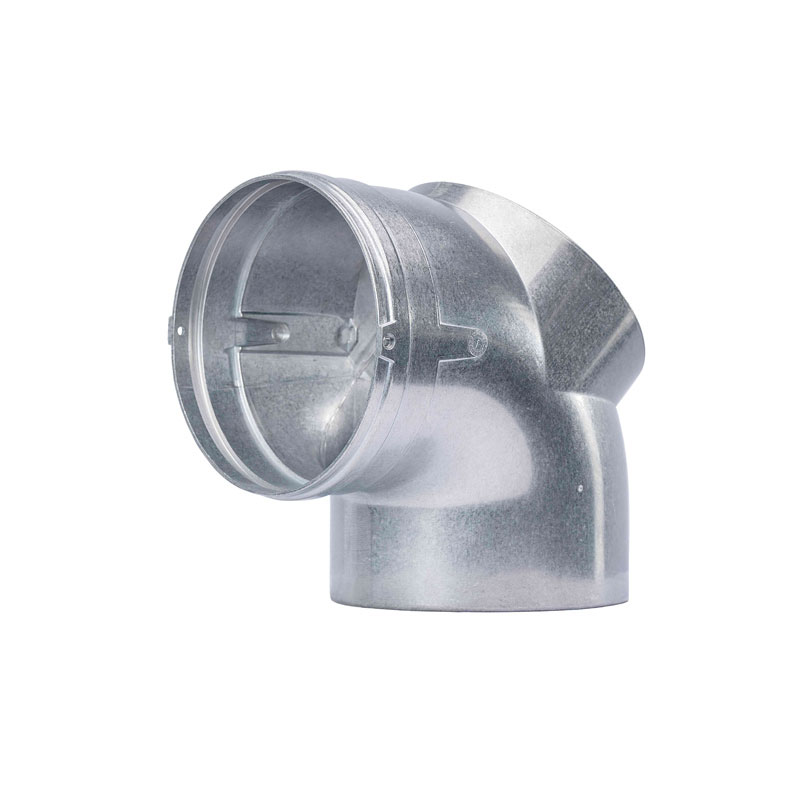Crafting Precision: Materials Used in the Manufacturing of 3-Way Elbow Pipe Fittings
2024-01-17
Introduction:
3-way elbow pipe fittings are integral components in piping systems, allowing for directional changes and the creation of branch connections. The choice of materials in manufacturing these fittings is crucial, as it directly influences factors such as durability, corrosion resistance, and suitability for specific applications. In this blog, we delve into the materials commonly used in the manufacturing of 3-way elbow pipe fittings, exploring their characteristics and applications.
1. Stainless Steel:
Stainless steel is a popular choice for 3-way elbow pipe fittings due to its excellent corrosion resistance. It is suitable for a wide range of applications, including water supply, chemical processing, and industrial systems. Varieties such as 304 and 316 stainless steel offer different levels of corrosion resistance and durability.
2. Carbon Steel:
Carbon steel provides strength and durability, making it a common material for 3-way elbow pipe fittings. It is suitable for applications where high strength is required, such as in oil and gas pipelines. However, carbon steel may be susceptible to corrosion, so additional coatings or treatments may be applied.
3. Brass:
Brass is valued for its corrosion resistance and aesthetic appeal. 3-way elbow pipe fittings made of brass are often used in water supply systems, plumbing, and certain industrial applications. Brass fittings are known for their ease of machining and ability to withstand a variety of environmental conditions.
4. Copper:
Copper 3-way elbow pipe fittings are chosen for their excellent conductivity and corrosion resistance. They are commonly used in plumbing systems, HVAC applications, and water distribution. Copper fittings are durable and can withstand high temperatures, making them suitable for various residential and commercial uses.
5. PVC (Polyvinyl Chloride):
PVC is a lightweight and cost-effective material used in the manufacturing of 3-way elbow pipe fittings. These fittings are commonly employed in water supply systems, irrigation, and certain chemical applications. PVC is known for its resistance to corrosion, chemicals, and abrasion.
6. CPVC (Chlorinated Polyvinyl Chloride):
CPVC is a thermoplastic material with enhanced heat resistance compared to standard PVC. 3-way elbow pipe fittings made of CPVC are suitable for hot water distribution systems and chemical processing. CPVC offers excellent chemical resistance and durability.
7. Polypropylene:
Polypropylene is a thermoplastic material known for its chemical resistance and high-temperature tolerance. 3-way elbow pipe fittings made of polypropylene are commonly used in chemical processing, water treatment, and industrial applications where resistance to aggressive chemicals is crucial.
8. Ductile Iron:
Ductile iron is a robust and durable material suitable for heavy-duty applications. 3-way elbow pipe fittings made of ductile iron are commonly used in municipal water supply systems, wastewater treatment plants, and industrial pipelines. Ductile iron provides strength and impact resistance.
9. Aluminum:
Aluminum 3-way elbow pipe fittings offer a lightweight and corrosion-resistant option. They find applications in industries such as aerospace, automotive, and certain fluid-handling systems. Aluminum fittings are valued for their strength-to-weight ratio.
10. Nickel Alloys:
Nickel alloys, such as Inconel and Hastelloy, are used in 3-way elbow pipe fittings for applications requiring exceptional corrosion resistance, high temperatures, and resistance to aggressive chemicals. These alloys are often found in chemical processing, petrochemical, and offshore industries.
Conclusion:
The materials used in the manufacturing of 3-way elbow pipe fittings are diverse, offering a range of characteristics to meet specific application requirements. Whether it's the corrosion resistance of stainless steel, the strength of carbon steel, or the chemical resistance of PVC, selecting the right material is crucial for ensuring the longevity and performance of these fittings in various piping systems. As technology and materials science continue to advance, the options for manufacturing high-quality 3-way elbow pipe fittings will likely expand, providing even more tailored solutions for diverse industries.



